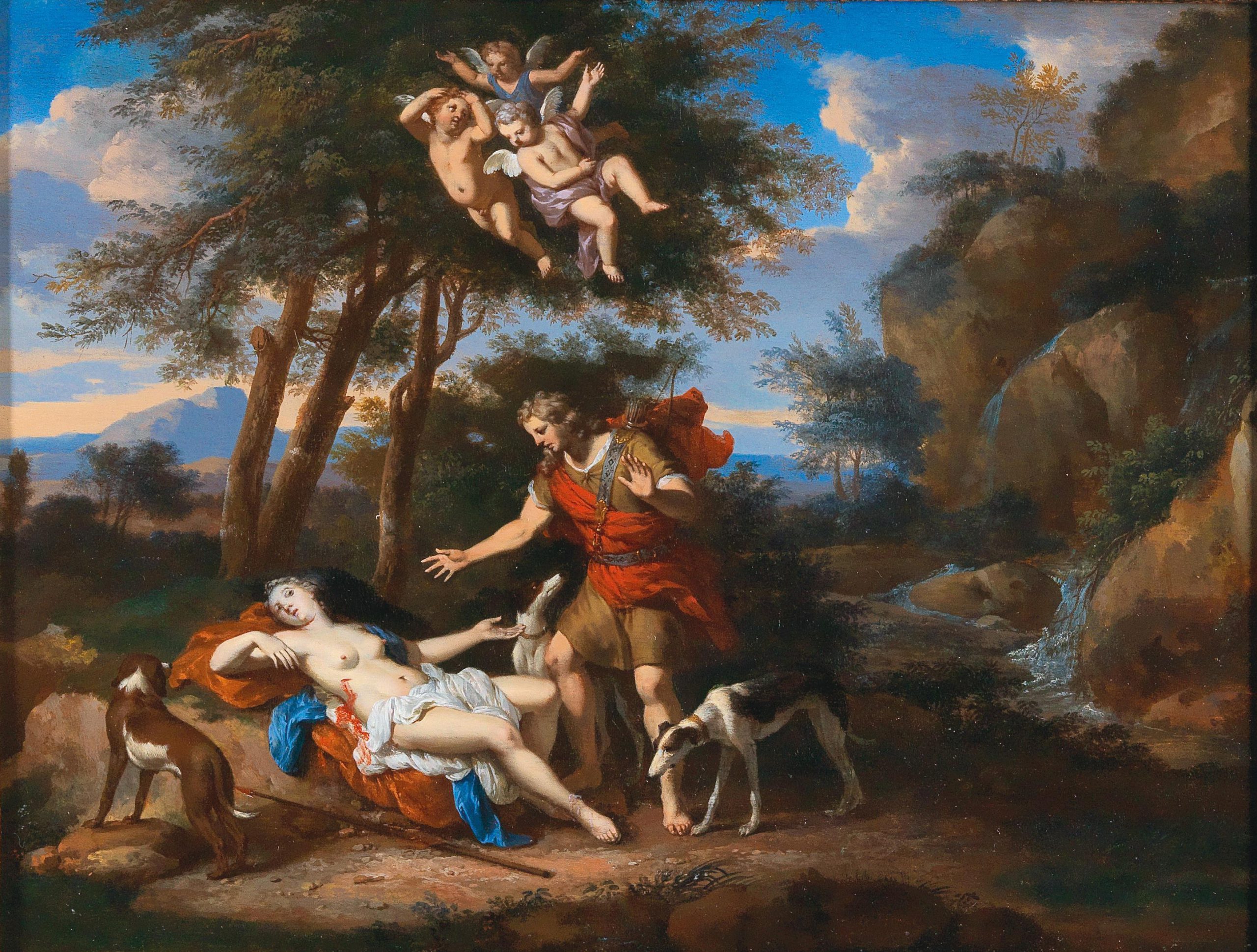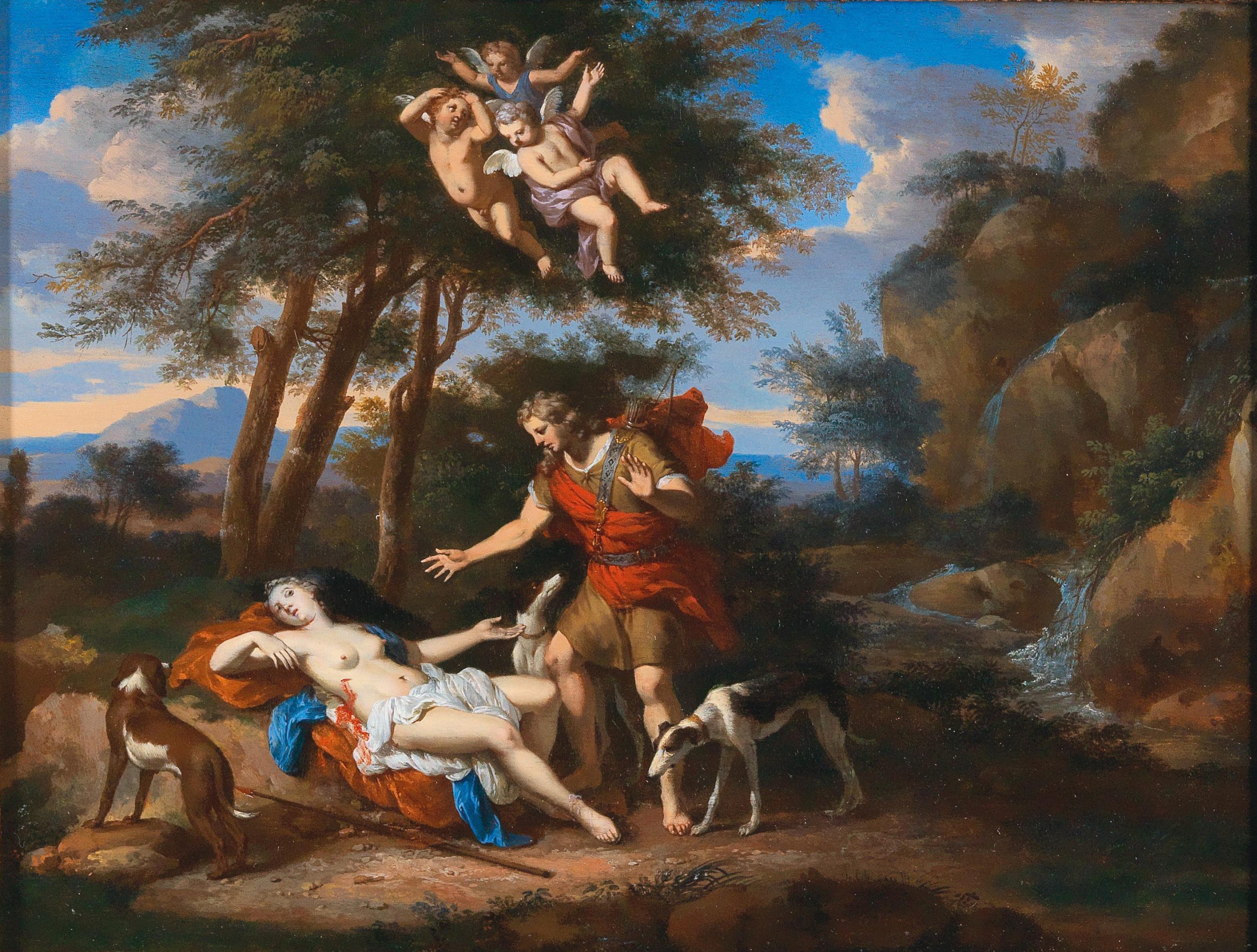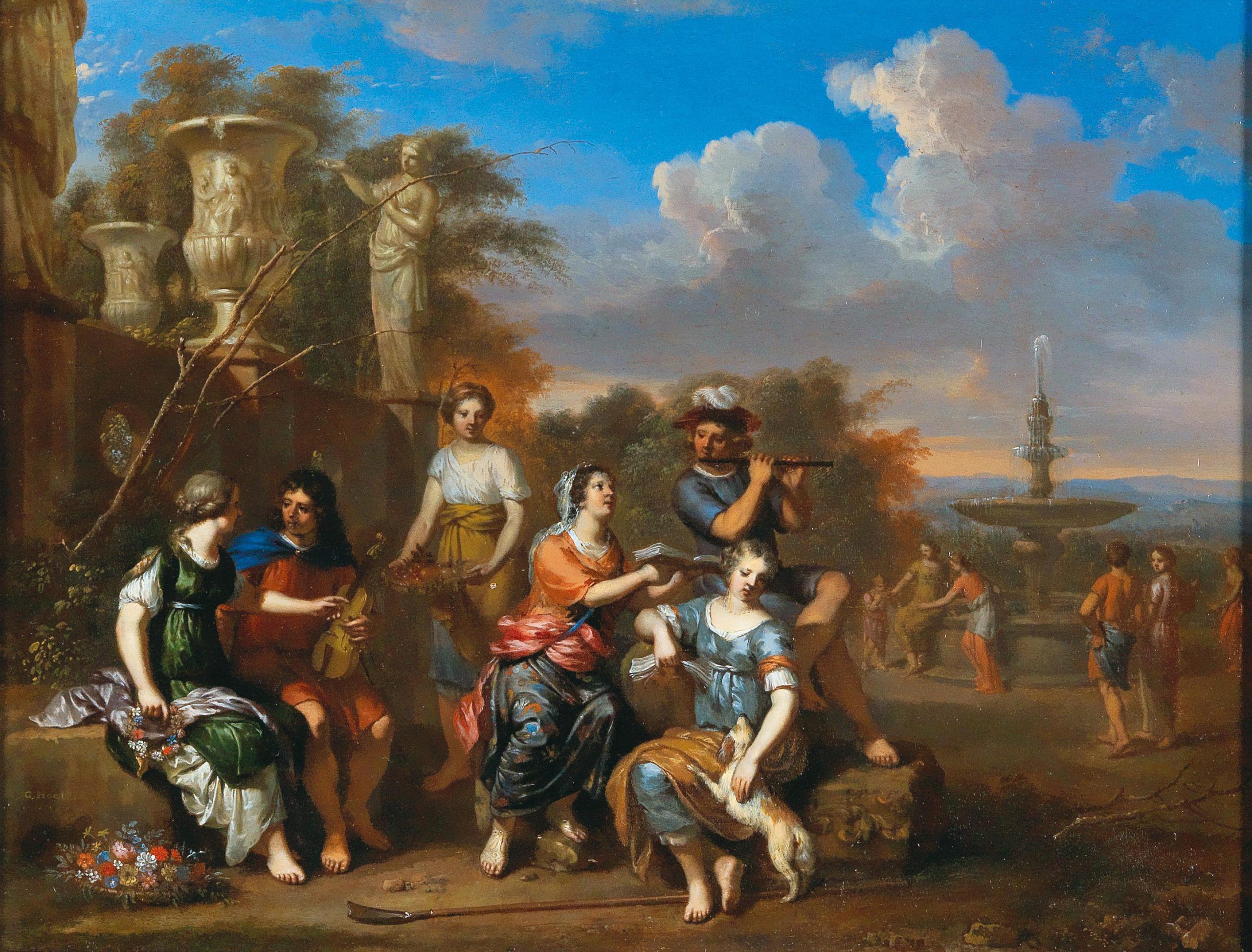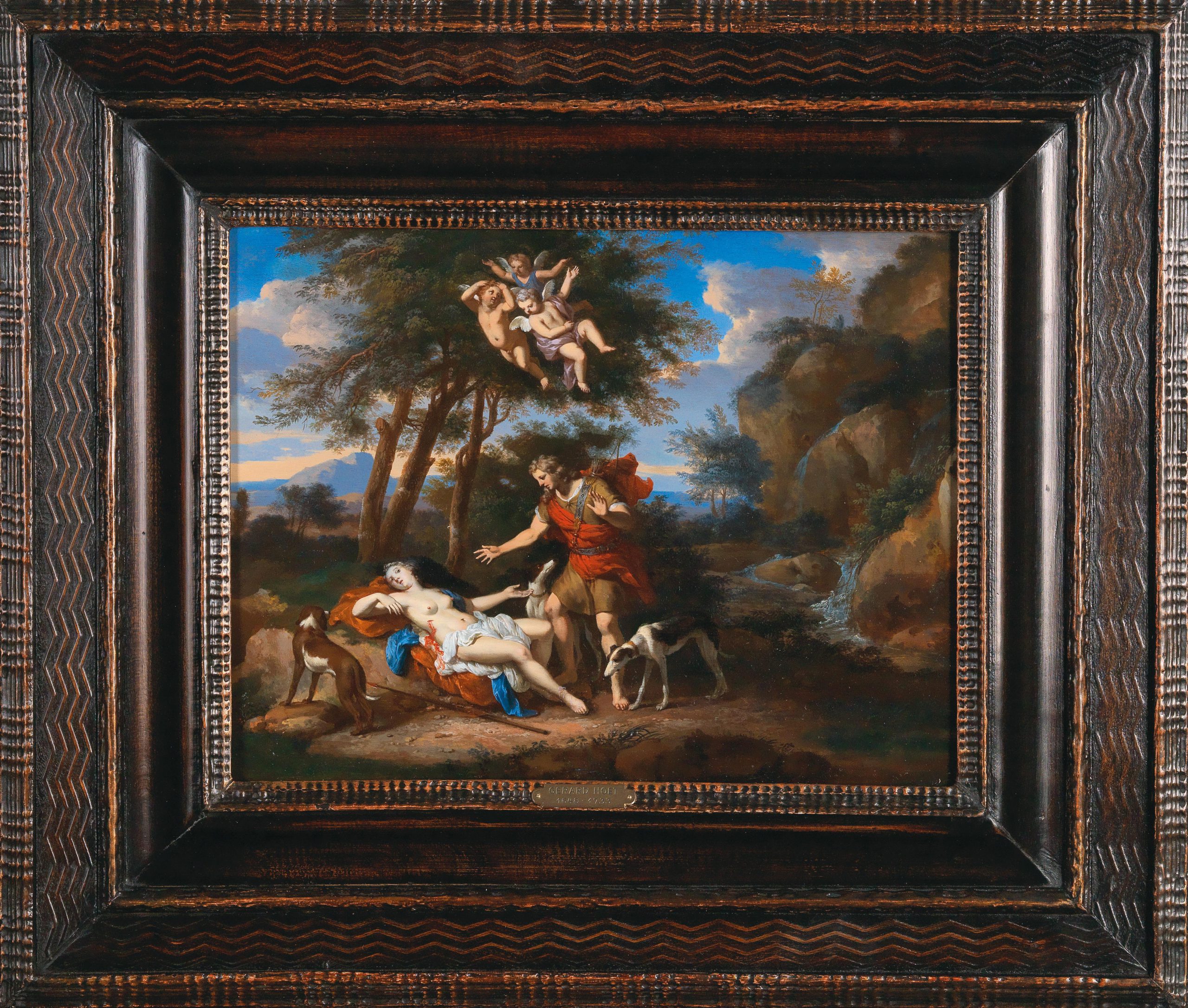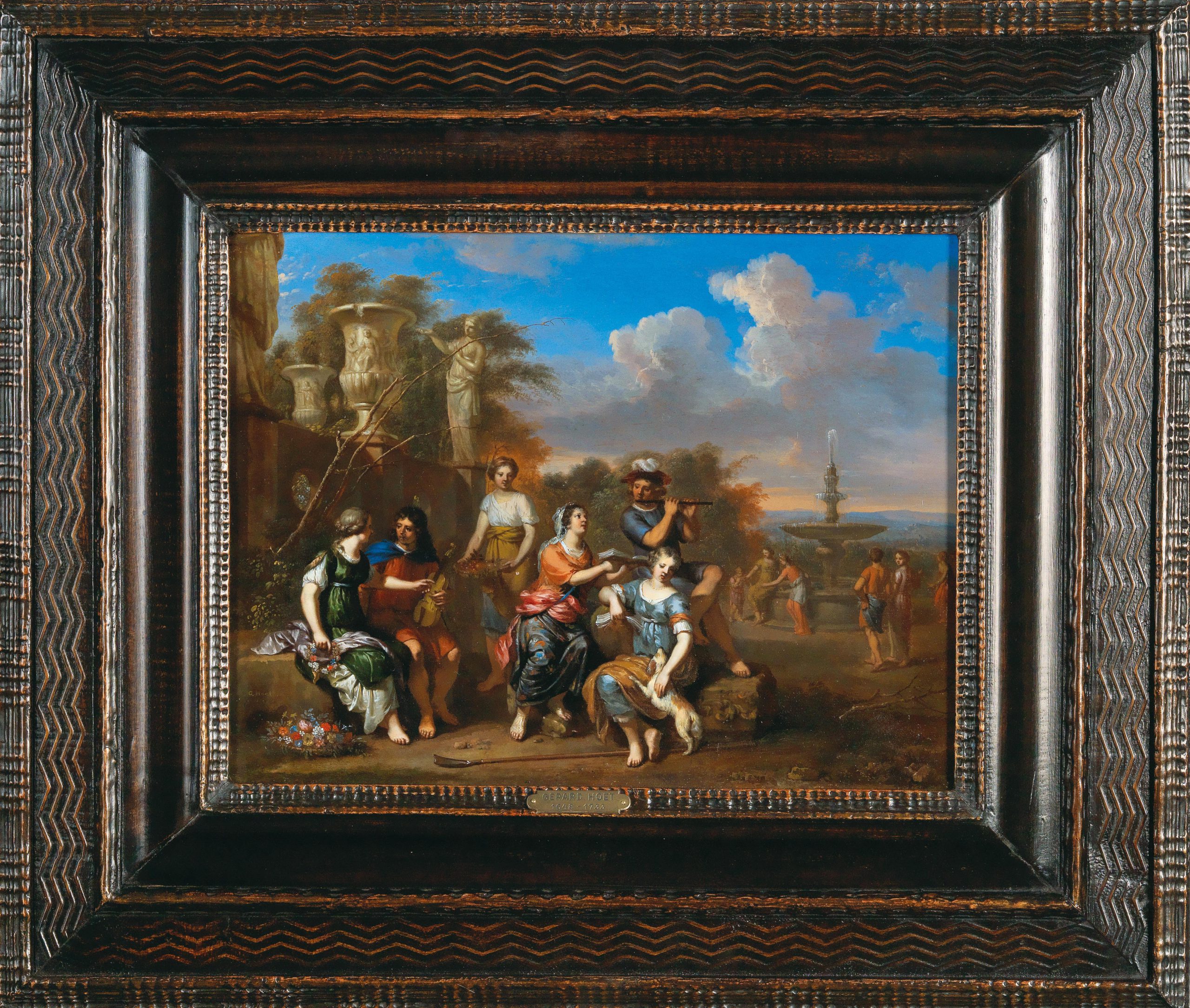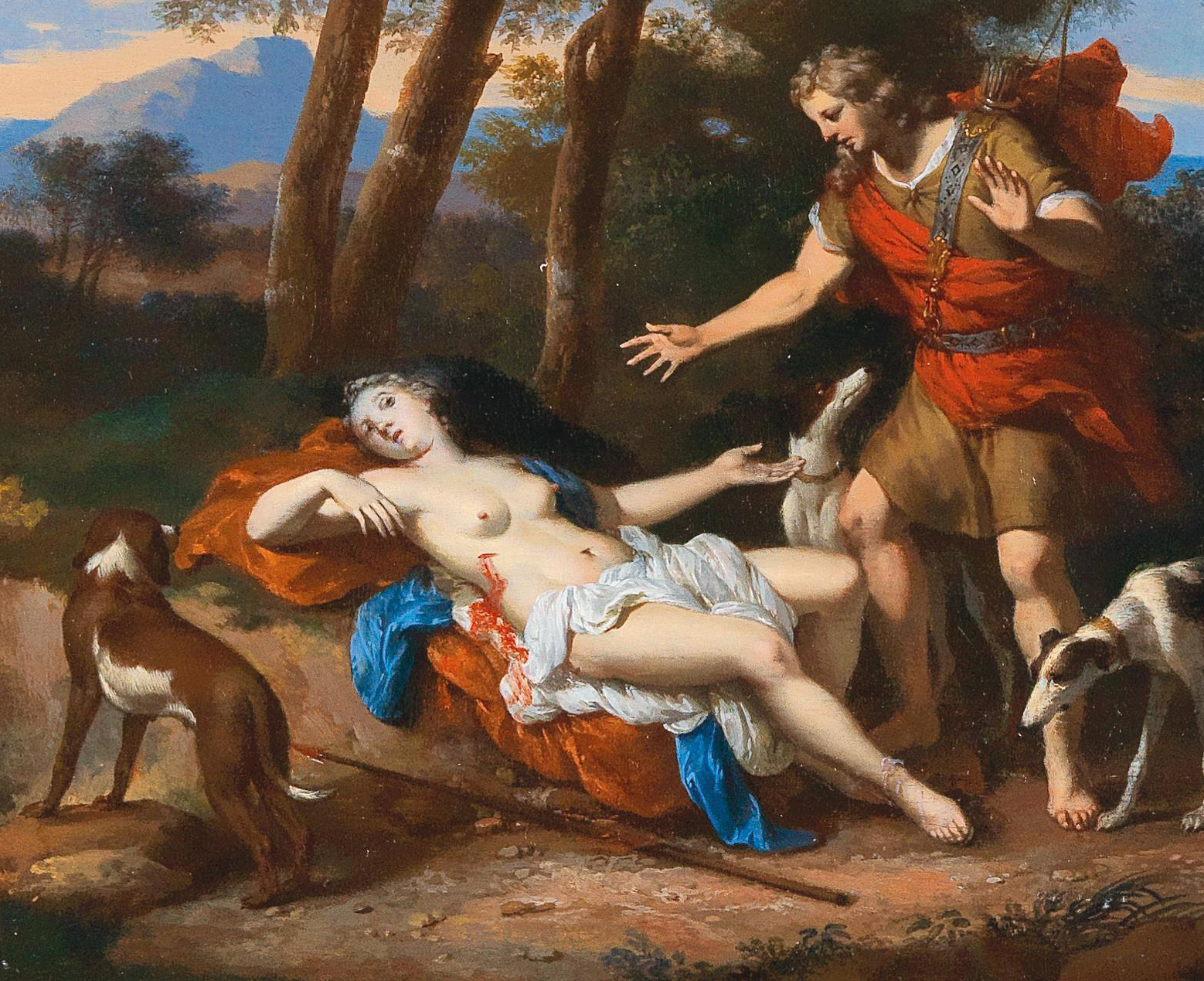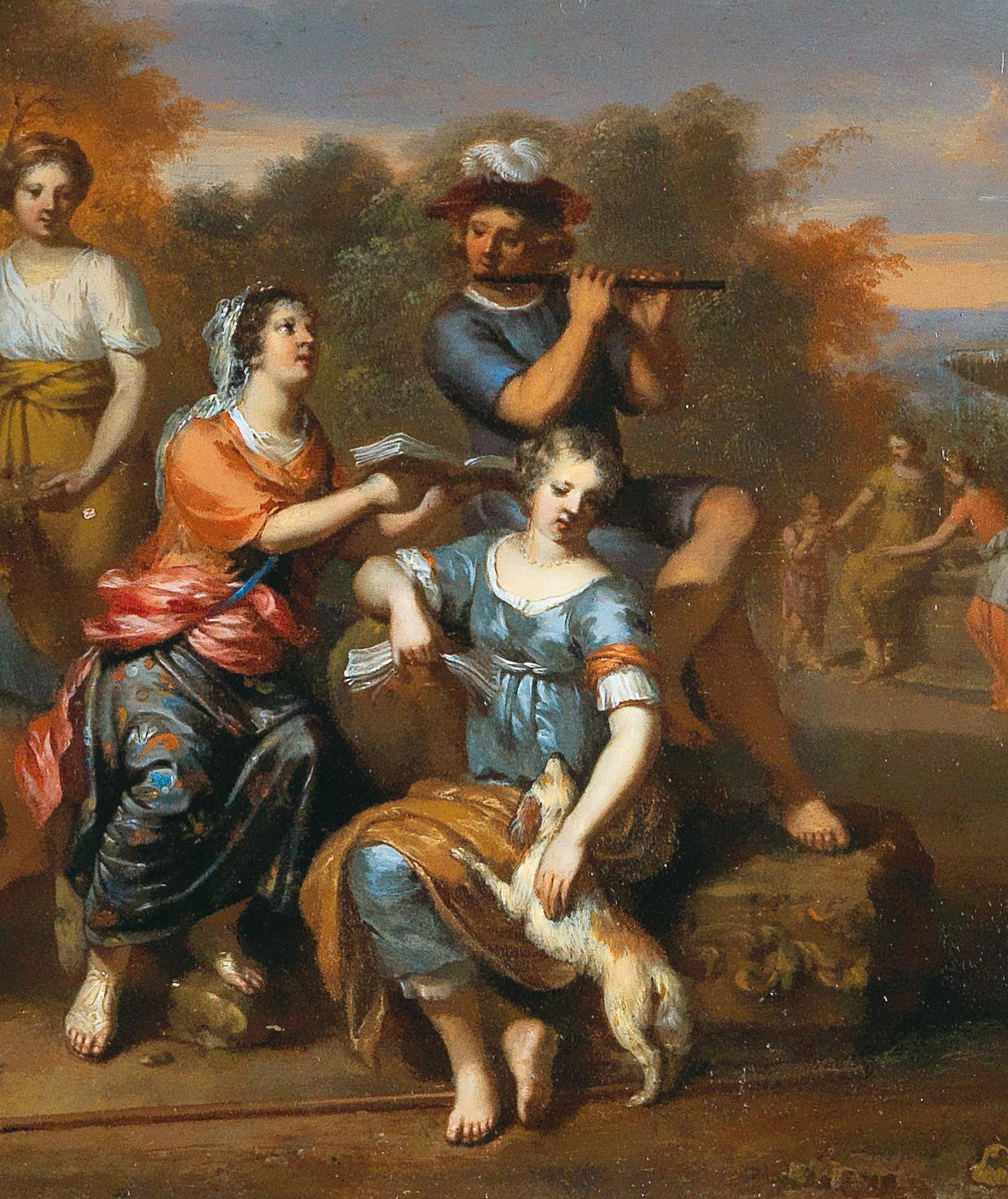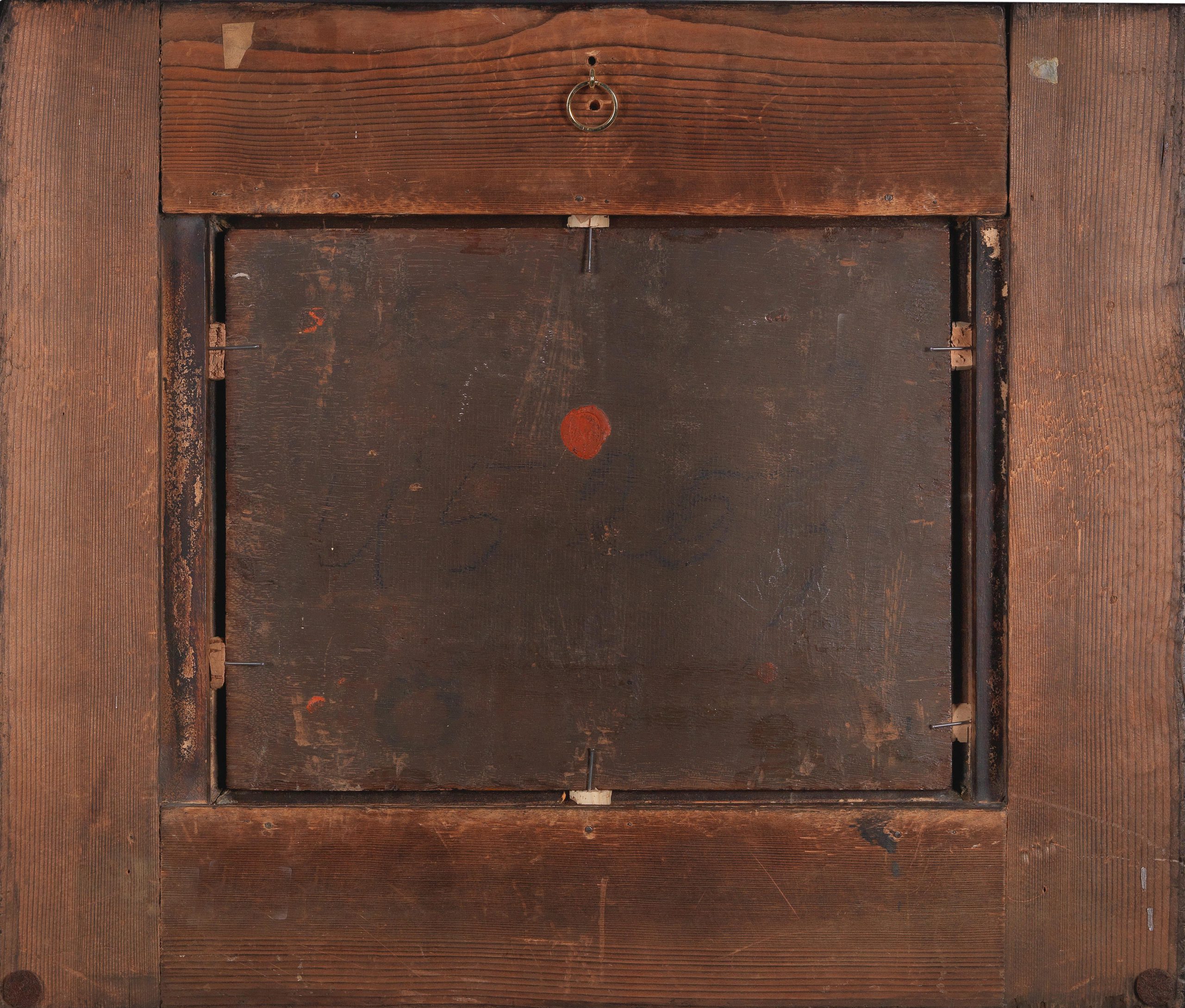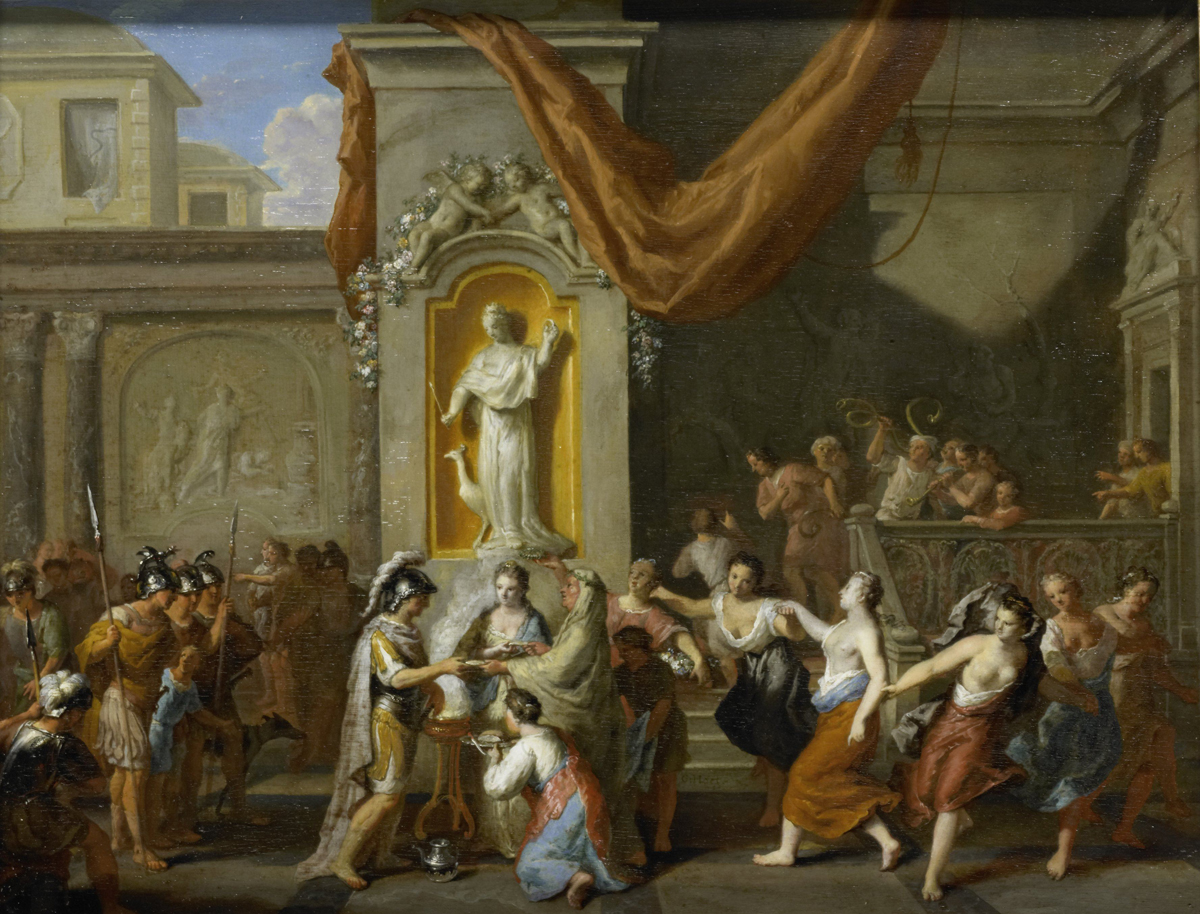GERARD HOET (Zaltbommel 1648 – 1733 The Hague)
Gerard Hoet (Zaltbommel 1648 – 1733 The Hague)
Cephalus and Procris
Elegant Company Making Music in an Arcadian Landscape
Both oil on panel, 26 x 34 cm (10.2 x 13.4 inch); framed in dark stained ripple moulding frames of 17th-century model
Both signed ‘G. HOET’ (lower left)
Provenance
Unidentified red lacquer seals on the reverses of both paintings; private collection, Austria
***
Gerard Hoet was born in Zaltbommel and was taught the first elements of painting and drawing by his father, the glass painter Moses Hoet, and continued his education in the studio of Warnard van Rijsen, who himself had been a pupil of Cornelis van Poelenburgh.1 In 1672 Hoet moved to courtly The Hague and set up his own studio as an independent master. The following year he travelled to Paris, and returned via Brussels, studying the artistic developments in France and Flanders. Upon his return, he settled in Utrecht, where he was patronised by Frederick van Nassau van Zuylestein, an illegitimate son of Stadtholder Prince Frederick Henry of Orange. Noblemen from the direct entourage of Stadtholder-King William III also provided commissions. Hoet founded a drawing academy in 1697 together with the painter Hendrick Schoock. Among his pupils were his own sons Hendrik Jacob Hoet and Gerard Hoet II.
Hoet specialised in highly refined paintings which subjects mostly taken from mythology, ancient history and the bible, generally set in idyllic landscapes. He also produced large-scale paintings, decorating whole rooms, which were popular during the period. Hoet’s paintings personify the Classicising style of Dutch Academic art, which became de rigeur towards the end of the seventeenth century, characterised by carefully prepared drawings based on life Academy drawings. Its foremost proponent, Gerard de Lairesse, wrote: ‘away with fumbling, grubbing, and messing: attack your work with a manly hand. But not like Rembrandt … so that the sap runs down the piece like dung.’ Towards the end of his life Hoet also became a leading art dealer.
The present pair of panels, which are very well preserved, are typical and particularly beautiful examples of Hoet’s most valued paintings. The subject of the first is taken from Ovid's Metamorphoses (7: 694–865). Cephalus, a handsome hunter from Athens, is married to Procris. Inflamed by Cephalus, the goddess Aurora (who is recalled by the dawning light in the landscape) sweeps him away, but her amorous mood is spoiled when Cephalus describes his wedding and even his nuptial night. Aurora dismisses him, exclaiming, “keep your Procris . . . you will come to wish that you had never had her”. On his way home, Aurora’s example makes Cephalus suspicious of his wife. This leads to unwarranted accusations, a trial separation, and eventual reconciliation, when Procris presents her husband with the gift of a spear that never misses its mark. After many years of happiness, problems resurface. One day, Cephalus is hunting in the woods. Sweaty from slaughtering animals, he begs a local breeze named Aula to cool “the heat with which I burn”. An eavesdropper overhears these sensual entreaties and reports them to Procris, who jealously spies upon her husband during the next day’s outing. When again he calls out to Aula, there is a groan and a rustling in the brush. Cephalus hurls the spear and, a moment later, hears the cry of his mortally wounded wife. Parting words are spoken as Procris sinks in her husband’s arms. The companion piece has as yet not been convincingly identified, but may represent a scene from the play Il Pastor Fido, a pastoral work set in Arcadia, written by Giovanni Battista Guarini and first published in 1590, which was highly influential as a source of inspiration to painters in the Dutch Golden Age.
Surving pairs of pendants by Hoet are exceptionally rare. The present works may be compared to Hoet’s Marriage of Alexander the Great in the Rijksmuseum (fig.).2Excellent examples of Hoet's work can furthermore be found in the collection of the National Trust (Stourhead) and The Dulwich Picture Gallery.
Another fine, larger work by Gerard Hoet is also currently offered by our gallery and can be found here. An interesting drawing by the master was previously sold by us.
1. For the artist, see E.J. Sluijter, ‘Een zaalbeschildering van Gerard Hoet in ‘De Slangenburg’: de liefdesgeschiedenis van Aeneas en Dido’, Nederlands Kunsthistorisch Jaarboek 31 (1980), p. 299-315 and Saur Allgemeines Künstlerlexikon: die bildenden Künstler aller Zeiten und Völker, Munich 1992- , vol. 74 (2012), pp. 40-41.
2. Oil on panel, 32 x 41 cm, inv. no. SK-A-161; Ekkehard Mai, Sander Paarlberg and Gregor J.M. Weber, Vom Adel der Malerei: Holland um 1700, exh. cat. Cologne (Wallraf-Richartz-Museum), pp. 150-151, cat. no. 23.
